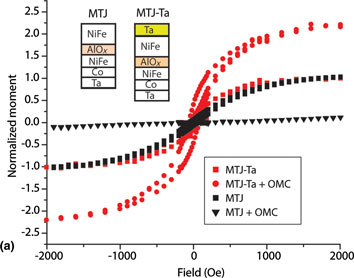Crossref Citations
This article has been cited by the following publications. This list is generated based on data provided by
Crossref.
Tyagi, Pawan
and
Riso, Christopher
2019.
Molecular spintronics devices exhibiting properties of a solar cell.
Nanotechnology,
Vol. 30,
Issue. 49,
p.
495401.
Grizzle, Andrew
D’Angelo, Christopher
and
Tyagi, Pawan
2021.
Monte Carlo simulation to study the effect of molecular spin state on the spatio-temporal evolution of equilibrium magnetic properties of magnetic tunnel junction based molecular spintronics devices.
AIP Advances,
Vol. 11,
Issue. 1,
Mutunga, Eva
D'Angelo, Christopher
Grizzle, Andrew
Lamberti, Vincent
and
Tyagi, Pawan
2022.
Dramatic effect of electrode type on tunnel junction based molecular spintronic devices.
Organic Electronics,
Vol. 106,
Issue. ,
p.
106526.
Tyagi, Pawan
2023.
New value of old knowledge: sulphur-based GaAs surface passivation and potential GaAs application in molecular electronics and spintronics.
Materials Research Express,
Vol. 10,
Issue. 4,
p.
042003.
Ram Sankhi, Babu
Peigney, Erwan
Brown, Hayden
Suh, Pius
Rojas-Dotti, Carlos
Martínez-Lillo, José
and
Tyagi, Pawan
2024.
Single-molecule Magnets (SMM) spin channels connecting FeMn antiferromagnet and NiFe ferromagnetic electrodes of a tunnel junction.
Journal of Magnetism and Magnetic Materials,
Vol. 611,
Issue. ,
p.
172608.
Sankhi, Babu Ram
Peigney, Erwan
Brown, Hayden
Suh, Pius
Rojas-Dotti, Carlos
Martínez-Lillo, José
and
Tyagi, Pawan
2025.
Single molecule magnet’s (SMM) effects on antiferromagnet-based magnetic tunnel junction.
AIP Advances,
Vol. 15,
Issue. 3,
